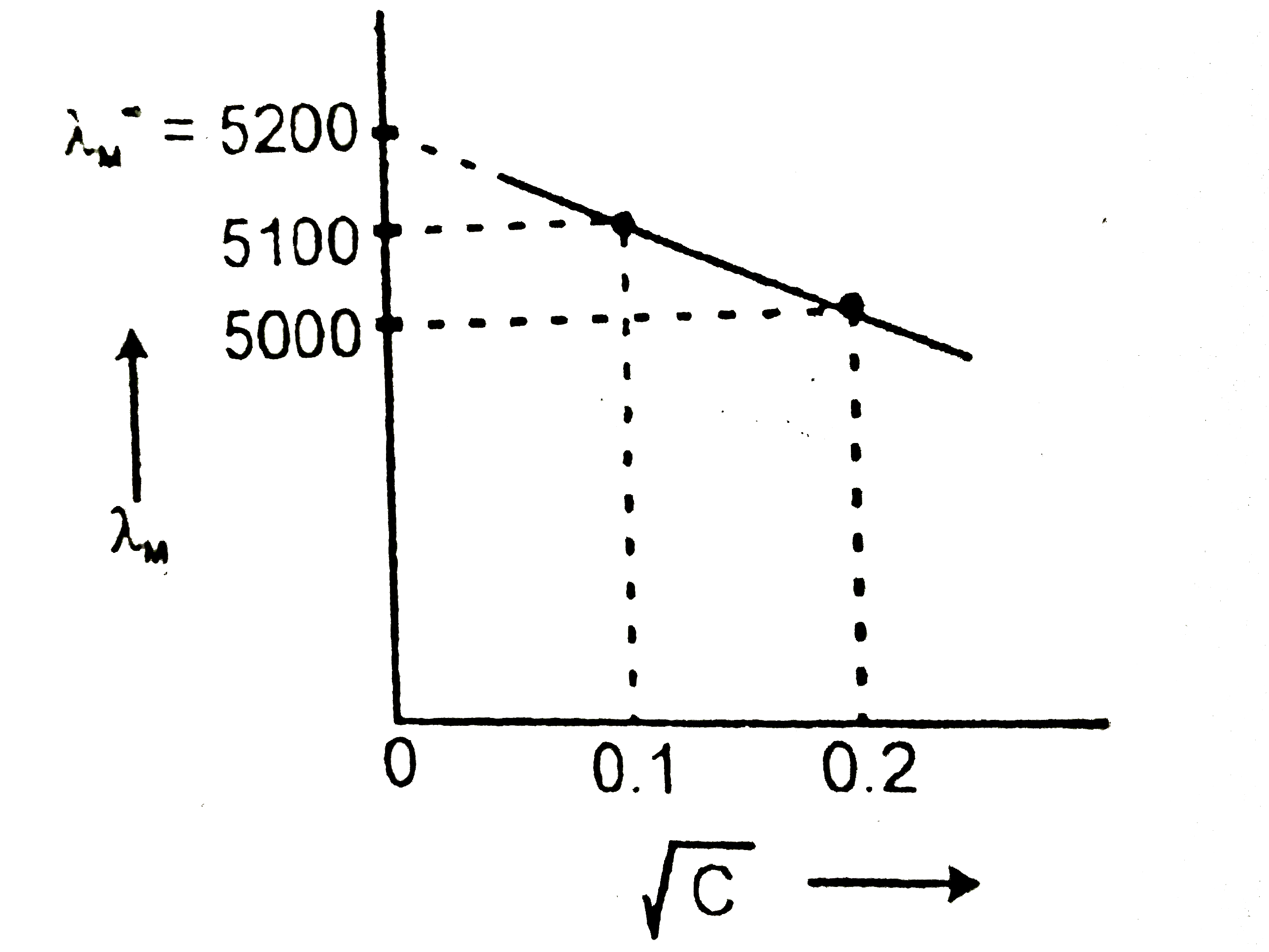Define conductivity and molar conductivity for the solution of an electrolyte. Discuss their variation with concentration.
Step-by-Step Text Solution:
Step 1: Define Conductivity
Conductivity (κ) is defined as the ability of an electrolytic solution to conduct electric current. It is the total conductance provided by the electrolytic solution present between two electrode plates. Mathematically, it can be expressed as:
κ=G⋅dA
Where:
- G = conductance of the solution (in siemens, S)
- d = distance between the electrodes (in meters)
- A = area of the electrodes (in square meters)
Step 2: Define Molar Conductivity
Molar conductivity (Λ) is defined as the conductance of a solution containing one mole of the electrolyte in a given volume of solution. It is given by the formula:
Λ=κC
Where:
- Λ = molar conductivity (in S m²/mol)
- κ = conductivity of the solution (in S/m)
- C = concentration of the electrolyte (in mol/m³)
Step 3: Discuss Variation with Concentration
- Variation of Conductivity with Concentration: As the concentration of the electrolyte decreases (dilution), the number of ions present in the solution per unit volume also decreases. This results in a decrease in the total conductance between the electrode plates. Therefore, conductivity (κ) decreases with decreasing concentration.
- Variation of Molar Conductivity with Concentration: Molar conductivity, on the other hand, increases with dilution. As the solution is diluted, the volume of the solution increases, allowing ions more space to move freely. Consequently, even though the number of ions per unit volume decreases, the total conductance for one mole of electrolyte increases due to the larger volume available for ion movement. Thus, molar conductivity (Λ) increases with decreasing concentration.
Summary:
- Conductivity (κ): Decreases with decreasing concentration.
- Molar Conductivity (Λ): Increases with decreasing concentration.
---
Conductivity (κ) is defined as the ability of an electrolytic solution to conduct electric current. It is the total conductance provided by the electrolytic solution present between two electrode plates. Mathematically, it can be expressed as:
- G = conductance of the solution (in siemens, S)
- d = distance between the electrodes (in meters)
- A = area of the electrodes (in square meters)
Molar conductivity (Λ) is defined as the conductance of a solution containing one mole of the electrolyte in a given volume of solution. It is given by the formula:
- Λ = molar conductivity (in S m²/mol)
- κ = conductivity of the solution (in S/m)
- C = concentration of the electrolyte (in mol/m³)
- Variation of Conductivity with Concentration: As the concentration of the electrolyte decreases (dilution), the number of ions present in the solution per unit volume also decreases. This results in a decrease in the total conductance between the electrode plates. Therefore, conductivity (κ) decreases with decreasing concentration.
- Conductivity (κ): Decreases with decreasing concentration.
- Molar Conductivity (Λ): Increases with decreasing concentration.
Topper's Solved these Questions
- ELECTROCHEMISTRYBook:NCERT ENGLISHChapter:ELECTROCHEMISTRYExercise:Exercise
Explore 33 Videos
- COORDINATION COMPOUNDSBook:NCERT ENGLISHChapter:COORDINATION COMPOUNDSExercise:Exercise
Explore 41 Videos
- GENERAL PRINCIPLES AND PROCESSESS OF ISOLATION OF ELEMENTS Book:NCERT ENGLISHChapter:GENERAL PRINCIPLES AND PROCESSESS OF ISOLATION OF ELEMENTS Exercise:Exercise
Explore 31 Videos
Similar Questions
(a) Define the terms conductivity and molar conductivity for the solution of an electrolyte.
Comment on their variation with temperature
(b) The measured resistance of a conductance cell was 100 ohms. Calculate (i) the specific conductance and (ii) the molar conductance of the solution
(KCl=74.5gmol−1 and cell constant =1.25 cm−1)
View SolutionDefine molar conductance
View Solution
Knowledge Check
The molar conductivity is maximum for the solution of concentration __________.
A0.004 MB0.002 MC0.005 MD0.001 M
Express the relation between.conductivity and molar conductivity of a solution.
View SolutionThe molar conductivity of strong electrolyte
View SolutionFor a dilute solution of a strong electrolyte, the variation of molar conductivity with concentration is given by
View Solution(a) Apply Kohlrausch law of independent migration of ions, write the expression to determine the limiting molar conductivity of calcium chloride.
(b) Given are the conductivity and molar conductivity of NaCI solutions at 298 K at different concentrations :

Compare the variation of conductivity and molar conductivity of NaCI solutions on dilution. Give reason.
(c) 0.1 M KCI solution offered a resistance of 100 ohms in conductivity cell at 298 K. If the cell constant of the cell is 1.29cm−1, calculate the molar conductivity of KCI solution.
View SolutionResistivity is reciprocal of molar conductivity of electrolyte.
View SolutionDefine the term molar conductivity.
View Solution
At 0.04 M concentration the molar conductivity of a solution of a electrolyte is 5000Ω−1cm2mol−1 while at 0.01 M concentration the value is 5100Ω−1cm2mol−1 making necessary assumption (taking it as strong electrolyte) find the molar conductivity at infinite dilution and also determine the degree of dissociation of strong electrolyte at 0.04M.
View Solution